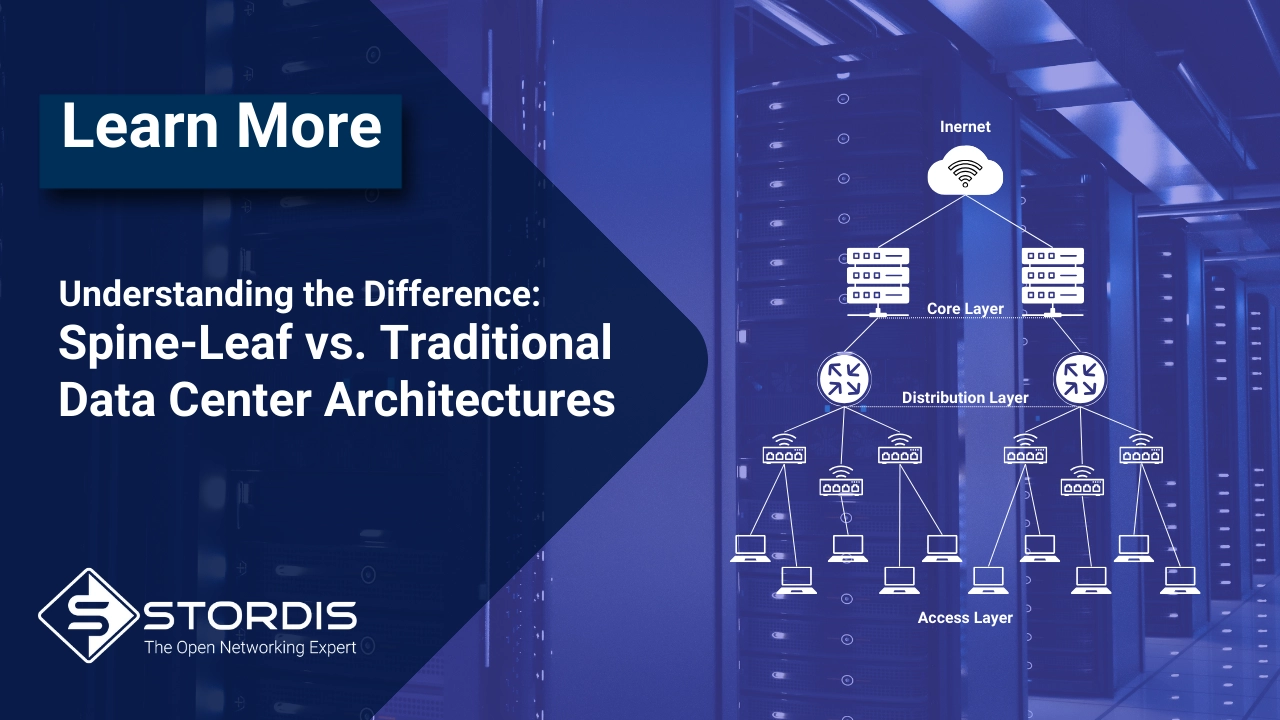- You have no items in your shopping cart
- Continue Shopping
Understanding the Differences: Switches vs. Routers, Layer 2 vs. Layer 3

Choosing the right network device for your organization can be a daunting task, especially when deciding between switches and routers, and between Layer 2 and Layer 3 functionalities. This blog aims to elucidate these differences, highlight their advantages, and provide guidance on how to choose the most suitable switch for your needs.
Switches vs. Routers: Understanding the Difference
While both switches and routers are integral to network infrastructure, they serve distinct roles and functions.
What is a Switch?
A switch operates at the data link layer (Layer 2) or network layer (Layer 3) of the OSI (Open Systems Interconnection) model. Its primary role is to connect multiple devices within the same network (e.g., a LAN) and forward data based on MAC or IP addresses.
Key Functions:
- Packet Forwarding: Uses MAC addresses (Layer 2) or IP addresses (Layer 3) to forward data.
- Network Segmentation: Creates separate collision domains to improve network efficiency.
- VLAN Support: Enhances network organization and security through logical segmentation.
Example: Think of a switch as a local traffic officer directing cars (data packets) to different streets (devices) based on their license plates (MAC addresses) within a neighborhood (LAN).
What is a Router?
A router operates at the network layer (Layer 3) of the OSI model. It connects multiple networks and directs data packets between them using IP addresses. Routers are essential for communication between different subnets or networks, such as connecting a home network to the internet.
Key Functions:
- Routing: Determines the best path for data packets between networks.
- Network Address Translation (NAT): Translates private IP addresses to a public IP address for internet access.
- Firewall Functions: Provides security by controlling incoming and outgoing traffic based on IP addresses.
Example: Imagine a router as an international travel agent that helps travelers (data packets) find the best route to their destination city (network) using their passports (IP addresses).
Key Differences Between Switches and Routers
| Feature | Switch | Router |
| OSI Layer | Data Link (Layer 2) and Network (Layer 3) | Network (Layer 3) |
| Function | Connects devices within a network | Connects multiple networks |
| Addressing Method | MAC addresses (Layer 2) / IP addresses (Layer 3) | IP addresses |
| Primary Use | Local data forwarding and VLAN segmentation | Routing data between different networks |
| Device Examples | LAN switches, Layer 3 switches | Home routers, enterprise routers |
What is Layer 2?
Layer 2 operates at the data link layer of the OSI model. It is primarily used in local area networks (LANs) to forward packets based on MAC addresses. By learning and maintaining a MAC address table, Layer 2 can efficiently direct packets to the correct destination port, enhancing network performance and reducing collisions.
Main Functions:
- Learning and Establishing MAC Address Tables: Associates source MAC addresses with input ports for efficient forwarding.
- Forwarding and Filtering: Directs packets to the appropriate port, minimizing unnecessary broadcasts.
- Elimination of Conflicts and Collisions: Ensures data is forwarded only to the designated port, unlike hubs.
- Broadcast and Multicast Support: Forwards relevant packets to all required ports.
- VLAN Support: Divides the network into virtual segments for improved security and management.
- Link Aggregation: Combines multiple physical links for better bandwidth and redundancy.
- Spanning Tree Protocol (STP): Prevents network loops, ensuring reliability.
Application Scenarios: Layer 2 is ideal for small networks, such as security monitoring, small hotels, or local businesses where devices reside within a single subnet.
Example: In a small office, a Layer 2 switch can connect all computers and printers on the same floor, ensuring efficient data transfer without any congestion.
Benefits:
- Improved Network Performance: Reduces congestion and increases available bandwidth.
- Better Network Organization: VLANs enhance management and security.
- Enhanced Network Security: VLANs separate sensitive traffic.
- Improved Network Resilience: Link aggregation provides redundancy.
Limitations:
- Limited Scalability: Not suitable for large networks.
- Limited Routing Functionality: Cannot perform routing between subnets.
- Reduced Visibility: Offers less traffic insight compared to Layer 3.
What is Layer 3?
Layer 3 operates at the network layer of the OSI model. It combines the functionalities of a switch and a router, facilitating packet forwarding based on IP addresses. This layer is essential for larger networks that require inter-subnet communication.
Main Functions:
- Routing: Supports data transmission between different subnets.
- VLAN Support: Offers logical network segmentation.
- Quality of Service (QoS): Prioritizes traffic to enhance performance.
- Port Aggregation: Increases bandwidth and reliability.
Application Scenarios: Layer 3 is suited for large networks with multiple VLANs, such as corporate offices with various departments needing inter-VLAN communication.
Example: In a large enterprise, a Layer 3 switch can manage traffic between different departments (HR, Finance, IT) ensuring each department’s data stays secure and organized while enabling inter-department communication.
Benefits:
- Enhanced Network Management: Offers advanced routing and management features.
- Higher Security: Supports ACLs and other security protocols.
- Greater Flexibility: Facilitates complex network architectures.
Limitations:
- Higher Cost: More expensive due to advanced capabilities.
- Increased Complexity: Adds complexity to smaller networks without significant benefit.
Key Differences Between Layer 2 and Layer 3
| Feature | Layer 2 | Layer 3 |
| Routing Function | Uses MAC addresses for forwarding | Routes based on IP addresses and MAC addresses |
| Transfer Method | MAC address table | IP routing and MAC address forwarding |
| Processing Capacity | Simpler processing | Handles complex routing information |
| Security and Flexibility | Basic security features | Advanced security and traffic control |
| Communication Range | Single subnet | Multiple subnets |
| Cost and Complexity | More affordable and simpler | More expensive and complex |
| Scalability | Limited | High scalability |
How to Choose Between Layer 2 and Layer 3
Specific Requirements: Evaluate whether your network requires advanced routing. For simple LANs, Layer 2 suffices, while Layer 3 is necessary for more complex networks.
Example: A small retail store with a few devices can efficiently operate with a Layer 2 switch. However, a university campus with multiple departments and high data traffic would benefit from a Layer 3 switch.
Cost Impact: Consider your budget. Layer 2 is generally more affordable. However, investing in Layer 3 may be justified for larger networks with advanced needs.
Network Complexity and Scalability: Layer 3 is essential for inter-VLAN routing, improving scalability and network efficiency.
Future Network Expansion: Plan for future growth. If your network is expected to expand, Layer 3 may offer better long-term value.
Example: If a small business plans to expand its offices or add more departments, starting with a Layer 3 switch could save costs and complexity in the long run.
Can Layer 3 Replace Routers?
In many small to medium-sized networks, Layer 3 can take on routing functions, potentially reducing the need for dedicated routers. They offer routing capabilities within the LAN and can manage inter-VLAN traffic effectively. However, for larger networks or those requiring advanced routing features, dedicated routers are still necessary, especially for connecting to external networks or the internet.
Example: For a local office network, a Layer 3 switch can handle all internal routing. However, for a company with multiple branches worldwide, dedicated routers would be needed to manage the complex routing between different locations.
Open Networking and Bare-Metal Hardware
In the world of Open Networking, bare-metal hardware is designed to operate efficiently under both Layer 2 and Layer 3 configurations. Modern network chipsets, primarily from Broadcom, combined with robust control planes from Intel, make this possible. The real versatility and power of these devices come from the Network Operating System (NOS) they run. A high-quality NOS can leverage the full potential of the hardware, enabling it to function as a switch under complete Layer 2 and/or Layer 3 configurations.
This flexibility allows network administrators to tailor their infrastructure precisely to their needs, whether they require the simplicity and speed of Layer 2 or the advanced routing capabilities of Layer 3.
Conclusion
Both Layer 2 and Layer 3 play vital roles in network management. Understanding their differences and advantages can help you make an informed decision that aligns with your network’s current and future needs. Additionally, recognizing the distinct roles of switches and routers ensures a robust and efficient network design. Whether you require the simplicity of Layer 2, the advanced capabilities of Layer 3, or the comprehensive routing functions of a router, selecting the right device is crucial for optimizing network performance and efficiency.

Marianna recently completed her master’s degree in Production Management and Engineering, which she has added to her degree in Technical Physics. It is this passion for technology that allows Marianna to thrive in the dynamic IT environment at STORDIS and to ensure that our clients’ needs are not just met, but surpassed, with the highest standards of excellence.
Comments
You might be interested in





